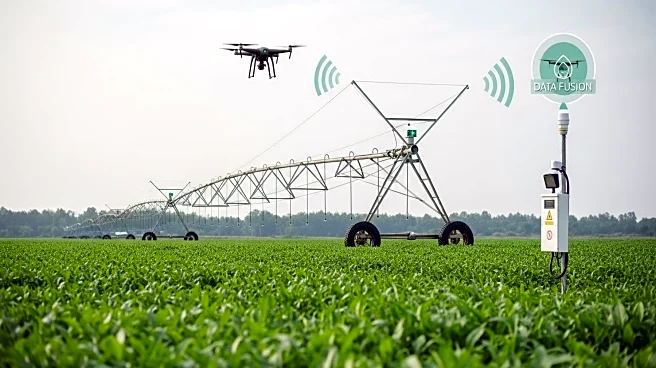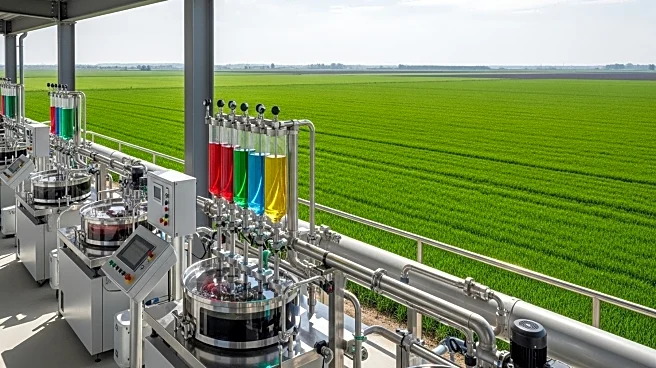What's Happening?
A recent study led by Yale University, published in the journal Nature Water, suggests that the use of crushed limestone on farmland could significantly reduce carbon emissions associated with agriculture. The research highlights that agriculture, including livestock and farming activities, contributes approximately 10% of the planet's annual carbon emissions. The study found that limestone, when spread across farmland, reacts with carbon dioxide in the air to form bicarbonate ions. These ions are then washed away by rain into waterways, where they transform into calcium carbonate, a stable form of carbon storage. This process does not reduce the emissions produced but prevents them from entering the atmosphere for potentially millions of years. The study emphasizes the cost-effectiveness and accessibility of limestone as a sustainable solution to address carbon issues in agriculture.
Why It's Important?
The findings of this study are significant as they offer a practical and economically viable method to address carbon emissions in agriculture, a sector that is a notable contributor to global greenhouse gases. By utilizing limestone, farmers can potentially reduce their carbon footprint without incurring substantial costs, thus aligning with broader environmental goals. This approach could also complement other green initiatives, such as the use of renewable energy sources and improved recycling processes, which are becoming more prevalent in industrial practices. The adoption of limestone in agricultural practices could lead to a substantial reduction in atmospheric carbon, contributing to global efforts to combat climate change and meet carbon reduction targets.
What's Next?
The study suggests that modifying liming practices to incorporate limestone should be prioritized to drive carbon removals in agriculture. As awareness of this method grows, it is likely that more farmers and agricultural stakeholders will consider adopting limestone as part of their carbon management strategies. This could lead to policy discussions and potential incentives for farmers to implement such practices. Additionally, further research may be conducted to optimize the use of limestone and explore its long-term impacts on soil health and crop yields.
Beyond the Headlines
The use of limestone in agriculture not only addresses carbon emissions but also highlights the importance of integrating sustainable practices into traditional farming methods. This approach could pave the way for more innovative solutions that balance environmental sustainability with agricultural productivity. Moreover, it underscores the role of scientific research in providing actionable insights that can influence policy and industry practices.












